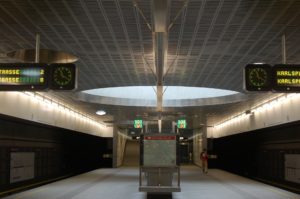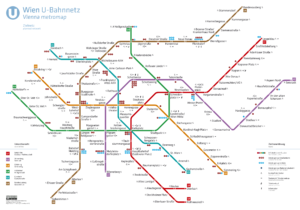Planning metro infrastructure is a complex and interesting challenge for urban planners, engineers and architects. A well-designed metro can be the backbone of a city’s modern transportation system and have a significant impact on the city’s economic, social, and environmental development. In this paper, we will highlight various aspects of subway infrastructure planning, from initial considerations to implementation and long-term impact on the city.
The demand for a metro: an urban challenge
The first step in planning a metro is to determine the demand. Today’s cities face many challenges, including population growth, traffic congestion, environmental pressures, and the need for sustainable transportation. Subways can help address these issues by providing fast, reliable, and environmentally friendly transportation alternatives. Traffic data, population projections, and urban planning goals are important factors to consider when deciding whether to build a subway.
Preparatory planning: research and feasibility studies
Once the need for a metro is identified, extensive preliminary studies begin. Feasibility studies and analyses are carried out to evaluate the technical, financial and social aspects of such a project. Routing, station locations, anticipated costs and expected benefits are just some of the many factors that must be carefully analyzed. Collaboration with experts and citizen participation play a critical role in ensuring a comprehensive assessment.
Funding and political support
Financing metro infrastructure is often one of the biggest challenges. The cost of building and operating a subway can be enormous and requires long-term funding. Political support is also critical to moving projects forward and overcoming potential obstacles. Public and private funding sources must be carefully weighed, and policymakers must be convinced of the long-term benefits of subways.
Infrastructure design: architecture and urban planning
The design of metro stations and tunnels is not only a technical challenge, but also an artistic one. Architectural and urban design concepts play an important role in making metros an integral part of urban life. An aesthetically pleasing design can increase the public’s appreciation of the infrastructure and improve the overall image of the city.
Technical challenges
Building a subway presents engineers with numerous technical challenges. Tunneling, bridge construction, groundwater sealing, ventilation systems, and integrating the infrastructure into the existing transportation network are just some of the complexities that must be considered. Safety and reliability are critical to ensure smooth operations and passenger safety.
Environmental aspects
Modern metro systems are often environmentally friendly transportation alternatives that help reduce carbon emissions and improve air quality. Reducing personal transportation and promoting public transit are important steps in the fight against climate change and pollution. When designing metros, it is important to incorporate green technologies and sustainable practices to minimize negative impacts on the environment.
The role of technology: automation and digitalization
Technological development does not stop at the metro. Modern metro systems increasingly rely on automation and digitization to improve operational efficiency. Automated train control systems, real-time passenger information, and smart ticketing systems are just a few examples of how technology can improve the user experience.
Social component: Accessibility and inclusion.
A successful metro infrastructure must also be socially inclusive and accessible to all segments of the population. Accessibility for people with disabilities, integration of the metro into existing transportation systems, and addressing the social needs of local populations are critical factors in the long-term success and acceptance of the metro.
Long-term impacts and benefits
A well-planned metro infrastructure can bring many long-term benefits to a city. It improves citizen mobility, reduces traffic congestion, promotes economic development, and improves the quality of life. The metro often becomes a symbol of the city’s identity and increases the city’s attractiveness, whether to tourists, businesses, or residents.
Summary
Planning metro infrastructure is a complex task that requires careful consideration of various factors. The art of planning is to balance technical challenges with social, economic and environmental objectives. A well-designed metro can further enhance urban life and contribute to the development of a prosperous and livable metropolis. The continuous development and integration of new technologies will mean that subways will continue to play a key role in urban mobility in the future.



